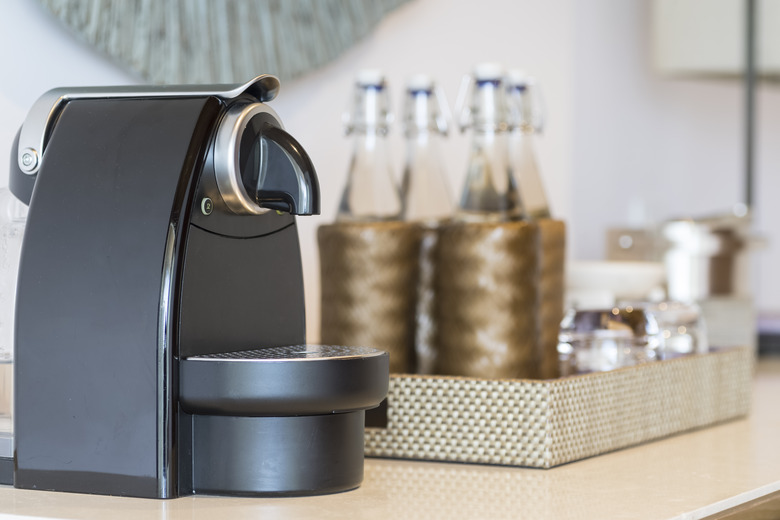How To Change The Water Filter On A Keurig Coffee Maker
We may receive a commission on purchases made from links.
The reason to replace Keurig water filters is to remove impurities from your water, such as chlorine, so that every cup of coffee tastes its best. Each Keurig water filter lasts for a certain number of brew cycles instead of a certain amount of time. So, if you're a coffee devotee who can't seem to get enough java each day, you'll have to change the water filter more often than if you're an occasional coffee drinker.
Keurig Model-Specific Water Filters
Keurig Model-Specific Water Filters
Keurig water filters aren't one-size-fits-all accessories. Proper Keurig water filter installation begins with identifying the coffee maker model you have to ensure you're installing the correct model-specific filter. Each coffee maker has a serial number, which determines the type of filter it needs. Keurig notes that some models, such as the K-Mini, K-Mini Plus and K15, don't have water filters.
Generally, you'll use a side reservoir filter for Keurig coffee makers that have water reservoirs on the side, such as the K-Select, K-Elite and K-Cafe. You'll use a rear reservoir filter for models that have water reservoirs on the back, including the K-Compact, K-Latte and K250.
Breaking it down to serial numbers, you'll need a K-Classic water filter for serial numbers that begin with 44, 45 or 48 and a side reservoir water filter for serial numbers that begin with 55.
Keurig Coffee Maker Serial Numbers
Keurig Coffee Maker Serial Numbers
You'll need to identify the serial number for your Keurig coffee maker to make sure you purchase and install the proper water filter. If you've misplaced your user manual, you can find this serial number directly on your coffee maker.
For most Keurig coffee makers, including the K-Select, K-Elite and K-Café models, remove the water reservoir on the side and you'll find a label with the serial number on the brewer. If you have a K-Classic model, you may also be able to find the serial number on the side of the brewer behind the water reservoir. But if you have an older K-Classic model, remove the drip tray and look for the serial number behind the tray on the brewer body.
If your Keurig coffee maker's water reservoir is at the back of the machine, including the K-Compact and K-Latte models, remove the reservoir to find the serial number on the back of the machine.
Keurig Water Filter Installation
Keurig Water Filter Installation
Before installing a Keurig water filter, soak the charcoal filter cartridge in fresh water for five minutes.
- After soaking the cartridge, thoroughly rinse it for 60
seconds. - Press in the tabs on both sides of the coffee maker base at
the bottom of the water filter handle and pull down to separate the handle from
the base. - Remove the old filter cartridge and insert the new
cartridge into the same Keurig water filter location. - Reattach the bottom of the water filter handle and insert
the handle into the water reservoir, firmly pressing it down to seat the filter
securely inside the reservoir.
Descaling a Keurig Coffee Maker
Descaling a Keurig Coffee Maker
Penn State University notes that although carbon water filters, such as the ones in coffee makers, remove chlorine from water, they don't remove minerals and salts, which can build up in your Keurig brewer. Keurig recommends descaling its coffee makers every three to six months to remove these deposits.
Keurig lists these steps for descaling its coffee makers with removable water reservoirs:
- Turn off your Keurig coffee maker, empty the water reservoir
and remove the water filter. - Pour Keurig's descaling solution into the water tank and fill
the empty bottle with water; add the water to the reservoir. (You can also use
48 ounces of undiluted vinegar instead of the Keurig descaling solution and
water.) - Place a large coffee mug on the drip tray plate and run a 10-ounce
brew cycle without adding a K-cup portion pack. - Discard the contents of the mug into the sink, and repeat
the process until the "Add Water" light comes on. - After letting the coffee maker sit for 30 minutes (powered on),
rinse the water reservoir with water, fill the reservoir with water and run at
least 12 brew cycles with the water only (no K-cups).
